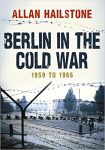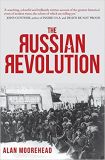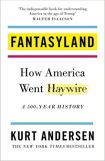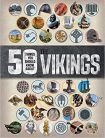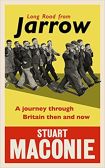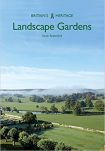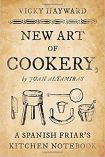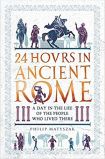Difference between revisions of "Newest History Reviews"
| Line 158: | Line 158: | ||
In 1745 a Spanish friary cook, Juan Altamiras, published the first edition of his ''New Art of Cookery, Drawn From the School of Economic Experience''. It contained more than two hundred recipes for meat, poultry, game, salted and fresh fish, vegetables and desserts. The style was informal, chatty and humorous on occasions and it was aimed, not at those who could afford to cook on a grand scale, but at those with more modest budgets, who sometimes needed to cook for large numbers. Whilst the ingredients were - for the most part - modestly priced there is a stress on the careful combination of flavours and aromas. Spices are used conservatively and the bluntness of some Moorish cooking is eschewed in favour of something much more subtle and we see influences from Altamiras' own region, Aragon, the Iberian court and the New World. [[Juan Altamiras' New Art of Cookery: A Spanish Friar's Kitchen Notebook by Vicky Hayward|Full Review]] | In 1745 a Spanish friary cook, Juan Altamiras, published the first edition of his ''New Art of Cookery, Drawn From the School of Economic Experience''. It contained more than two hundred recipes for meat, poultry, game, salted and fresh fish, vegetables and desserts. The style was informal, chatty and humorous on occasions and it was aimed, not at those who could afford to cook on a grand scale, but at those with more modest budgets, who sometimes needed to cook for large numbers. Whilst the ingredients were - for the most part - modestly priced there is a stress on the careful combination of flavours and aromas. Spices are used conservatively and the bluntness of some Moorish cooking is eschewed in favour of something much more subtle and we see influences from Altamiras' own region, Aragon, the Iberian court and the New World. [[Juan Altamiras' New Art of Cookery: A Spanish Friar's Kitchen Notebook by Vicky Hayward|Full Review]] | ||
| + | |||
| + | <!-- MATYSZAK --> | ||
| + | |- | ||
| + | | style="width: 10%; vertical-align: top; text-align: center;"| | ||
| + | [[image:Matysak_24.jpg|link=http://www.amazon.co.uk/dp/1782438564/ref=nosim?tag=thebookbag-21]] | ||
| + | |||
| + | |||
| + | | style="vertical-align: top; text-align: left;"| | ||
| + | ===[[24 Hours in Ancient Rome by Philip Matyszak]]=== | ||
| + | |||
| + | [[image:4.5star.jpg|link=Category:{{{rating}}} Star Reviews]] [[:Category:History|History]] | ||
| + | |||
| + | I've never been that interested in Ancient Rome. Blame my teachers, or our oh-so-dry visits to Roman villas with their earnest interpretation panels, or perhaps I just daydreamed through all the interesting bits… Somehow I entered adulthood with the impression that all Romans were bloodthirsty and hedonistic heathens with little to recommend them. ''Mea culpa'', you might say. So when my eye fell upon Philip Matyszak's ''24 Hours in Ancient Rome'', and its claim to introduce readers to the real Ancient Rome by examining the lives of ordinary people, I decided it was high time to update my education. And the lovely artwork on the front cover made this book all the more appealing. [[24 Hours in Ancient Rome by Philip Matyszak|Full Review]] | ||
| Line 164: | Line 177: | ||
|} | |} | ||
| − | |||
| − | |||
| − | |||
| − | |||
| − | |||
| − | |||
| − | |||
| − | |||
{{newreview | {{newreview | ||
|author= Sharon Bennett Connolly | |author= Sharon Bennett Connolly | ||
Revision as of 17:19, 26 April 2018
|
|
The Great Horizon: 50 Tales of Exploration by Jo WoolfJo Woolf has compiled a brilliant set of fifty short insights into the lives and achievements of some amazingly brave people. Their fearless journeys have helped us unlock many of the mysteries of the wildest parts of our world, and also given us an understanding of what it is like to be faced with the most terrible conditions and still have the determination and grit to carry on. This book could be viewed as a taster which encourages us to seek out and read more about some of the most iconic explorers. Their stories are pretty incredible and Woolf does them justice. Full Review |
|
|
Berlin in the Cold War: 1959 to 1966 by Allan HailstoneBerlin in the Cold War: 1959-1966 contains almost 200 photographs taken by author / photographer Allan Hailstone in his visits to the city during this period. The images provide an insight into the changing nature of the divide between East and West Berlin and a glimpse into life in the city during the Cold War. Full Review |
|
|
The Russian Revolution by Alan MooreheadThe author was writing from a slightly different stance from most other historians. Only a decade after the end of the Second World War, he was basing his account on the premise that the Nazis' rise to power in Germany was connected with the heritage that Lenin had left behind, and that without Stalin's assurances of support Hitler would never have dared to plunge the world into such a devastating global conflict. It was his belief that America's post-war commitments in Europe and the Far East, and other post-1945 developments, could also be traced back to the events of 1917. Much of his material came from German archives which were saved from destruction when the Third Reich was on the brink of collapse. These documents that the German government would have kept private had they won the war provided full detail on the attempts of their forebears to pave the way for chaos and revolution in their Asiatic neighbour.Full Review |
|
|
Rooms with a View: The Secret Life of Great Hotels by Adrian MourbyAdrian Mourby has given us a flying visit to each of fifty grand hotels, from fourteen regions of the world, with the hotels in each section being arranged chronologically rather than by region, which helps to give something of an overall picture. So what makes a hotel 'grand'? The first hotel to call itself 'grand' was in covent Garden in 1774 and it ushered in the beginning of a period when a hotel would be a lifestyle choice rather than a refuge for those without friends and family conveniently nearby. The hotels we visit all began life in different circumstances and each faced a different set of challenges. We begin in the Americas, move to the United Kingdom, circumnavigate Europe, briefly visit Russia and Turkey then northern Africa, India and Asia. Australia, it seems, does not go for the grand. Full Review |
|
|
Fantasyland by Kurt AndersenFantasyland covers the history of America from 1517 to 2017 in awesome detail. Covering five centuries of tempestuous history, Andersen paints the conjuring of America in vivid relief. Discussing everything from pilgrims to politicians, the exhilarating gold rush to alternative facts, seminal episodes are explored in forensic detail with razor sharp wit. Full Review
|
|
|
Tea Gardens (Britain's Heritage Series) by Twigs WayTea Gardens really began in London in the late 18th century: a trip to Kings Cross or St Pancras was effectively a trip to the country in those days. Men had their coffee houses, but they were not places where women could or would be seen. Tea was introduced to England in the 17th century but it was not until 1784 that the high duty was reduced from 119% to 12½% and tea became the drink of choice for the nation. Until then the working classes had been fuelled largely by cheap gin. Only, where would this beverage be drunk? One answer was the pleasure gardens where the fashionable went to see and be seen: by the mid 1600s tea was also being served in places such as Ranelagh Gardens. Full Review |
|
|
The Marches by Rory StewartThe Observer quote on the front of the paperback edition of Stewart's latest book observes This is travel writing at its finest. Perhaps, but to call it travel writing is to totally under-sell it. This is erudition at its finest. Stewart has the background to do this: he had an international upbringing and followed his father in both the Army and the Foreign Office, and then (to his father's, bemusement, shall we say) became an MP. Oh, and he walked 6,000 miles across Afghanistan in 2002. A walk along the Scottish borders should be a doddle by comparison. Full Review |
|
|
50 Things You Should Know About the Vikings by Philip Parker
The Vikings have got a lot to own up to. A huge DNA study in 2014 was the first thing that proved to the Orkney residents that they had Viking blood in their veins – they had been insisting it was that of the Irish. The Vikings it was that forced our English king's army to march from London to Yorkshire to kill off one invasion, only to spend the next fortnight schlepping back to Hastings to try and fend off another – and the Normans had the same Norse origin as the first lot, hence the name. There is a Thames Valley village just outside Henley – ie pretty damned far from the coast – that has a Viking longship on its signpost. Yes, they got to a lot of places, from Greenland to Kiev, from Murmansk to Turkey and the Med, and their misaligned history is well worth visiting – particularly on these pages. Full Review |
|
|
Long Road From Jarrow by Stuart MaconieI cancelled my Country Walking magazine subscription about a year ago and the only thing I miss is Stuart Maconie's column. His down-to-earth approach and sharp wit belie an equally sharp intellect and a soul more sensitive than he might be willing to admit. Let's be honest, though, I picked this one up because of someone else's review, in which I spotted names like Ferryhill and Newton Aycliffe. Places I grew up in. Like Maconie I have no connection (that I know of) to the Jarrow Crusade but when he talks about it being a whole matrix of events reducible to one word like Aberfan, Hillsborough, or Orgreave then somehow it does become part of my history too. Tangentially, at least. Full Review |
|
|
Vintage Kitchenalia by Emma KayOver the half century and more that I've been preparing meals on a regular basis I've seen food preparation move from being just something you did, to an obsession akin to a religion. My first kitchen had nothing in the way of luxury - it was there to make meals as nutritiously and economically as possible: my current kitchen is not quite state of the art, but it's equipped to a high standard and is a pleasure to work in. But what of all the equipment which went before, which paved the way to what we have now? Emma Kay is going to give you a quick trip through the history. Full Review |
|
|
Landscape Gardens by Sarah RutherfordMy first experience of a big garden was Versailles as a teenager and whilst I was impressed, I didn't really like it. I felt stifled and strangely underwhelmed by the flatness of it all. As luck would have it I then saw Hampton Court and it was official: I was off big gardens. It would be many years before I revised my opinion. On a trip to Harewood House it was too hot a day to be corralled into the house, so I wandered the gardens and found they were delightful. I felt uplifted. Then a cricket match at Stowe gave me the opportunity to walk the grounds for over an hour. I was completely won over and a devotee of Lancelot 'Capability' Brown. Sarah Rutherford's Landscape Gardens was an opportunity to put him in context. Full Review |
|
|
Juan Altamiras' New Art of Cookery: A Spanish Friar's Kitchen Notebook by Vicky HaywardIn 1745 a Spanish friary cook, Juan Altamiras, published the first edition of his New Art of Cookery, Drawn From the School of Economic Experience. It contained more than two hundred recipes for meat, poultry, game, salted and fresh fish, vegetables and desserts. The style was informal, chatty and humorous on occasions and it was aimed, not at those who could afford to cook on a grand scale, but at those with more modest budgets, who sometimes needed to cook for large numbers. Whilst the ingredients were - for the most part - modestly priced there is a stress on the careful combination of flavours and aromas. Spices are used conservatively and the bluntness of some Moorish cooking is eschewed in favour of something much more subtle and we see influences from Altamiras' own region, Aragon, the Iberian court and the New World. Full Review |
|
|
24 Hours in Ancient Rome by Philip MatyszakI've never been that interested in Ancient Rome. Blame my teachers, or our oh-so-dry visits to Roman villas with their earnest interpretation panels, or perhaps I just daydreamed through all the interesting bits… Somehow I entered adulthood with the impression that all Romans were bloodthirsty and hedonistic heathens with little to recommend them. Mea culpa, you might say. So when my eye fell upon Philip Matyszak's 24 Hours in Ancient Rome, and its claim to introduce readers to the real Ancient Rome by examining the lives of ordinary people, I decided it was high time to update my education. And the lovely artwork on the front cover made this book all the more appealing. Full Review
|
Heroines of the Medieval World by Sharon Bennett Connolly
Many women in medieval times left their mark on history, but as a rule they have been neglected by biographers and historians as there is too little surviving information for them to have even brief biographies to themselves. Ms Connolly has adopted an enterprising solution to the problem by writing a general account on a broadly thematic basis. Full review...
The House of Beaufort: The Bastard Line that Captured the Crown by Nathen Amin
The family name of Beaufort played a major part in British history during the fourteenth and fifteenth centuries. It therefore seems remarkable that little has been written about them until the appearance of this book. Full review...
The Taking of K-129: The Most Daring Covert Operation in History by Josh Dean
In February 1968 the Soviet nuclear missile submarine K-129 left the port of Petropavlovsk on the Kamchatka peninsula with a crew of 98 submariners. The captain and executive officers were experienced: the only factor giving cause for concern was that the crew had only recently returned to base and were expecting a longer break and were only back at sea because two sister ships had experienced mechanical problems and were unfit for combat controls. The Division Commander complained that the decision was cruel and potentially reckless. He would be proved right - but not publicly - as K-129 went down with all hands in March 1968. It was a while before the sSoviet navy realised that it had lost one of its submarines and despite an extensive search they couldn't find it. Full review...
Waterloo Voices 1815: The Battle at First Hand by Martyn Beardsley
The battle of Waterloo, fought on a midsummer day on a muddy field in Belgium, brought an end to two decades of war in Europe. As one of the pivotal events of the nineteenth century, it has inevitably been the focus of many accounts over the last two hundred years. Full review...
What Have the Germans Ever Done for Us?: A History of the German Population of Great Britain by Susan Duxbury-Neumann
The adapted Monty Pythonesque rhetorical question takes some time to provide a full answer, and this slim but useful volume does so very well. Full review...
The Tunnel Through Time: A New Route for an Old London Journey by Gillian Tindall
This book traces the course of historical journeys across the city in time and space, examining how the areas above the new Crossrail route, the largest building project currently under construction in Europe offering high speed links across London, have changed over the centuries, with destruction and renewal being a constantly recurring process in the city's history. It is a fascinating, compellingly readable exploration through the historical highways and byways of the metropolis. Full review...
Voices of the Flemish Waffen-SS: The Final Testament of the Oostfronters by Jonathan Trigg
In the week I write this, Trump has come under fire for not condemning fascistic behaviour in America from some Neo-Nazis. It strikes me that the Neo- is a pointless dignification – yes, they cannot be deemed to follow Hitler precisely as he's long dead and burnt, so they're kind of new, but common sense obliges me to just call them Nazis. Their excuse is they feel America has been invaded by the enemy – but what if you were indeed under occupation? Could you see yourself working for the forces that had indeed invaded you? The author begins by pointing out that several countries were invaded by the Nazis, and they have different feelings about the people who worked against the commonly-held nationalistic aim. France hates her collaborators, but just north of the border things are different – and the picture is a lot more muddy as a result. Full review...

